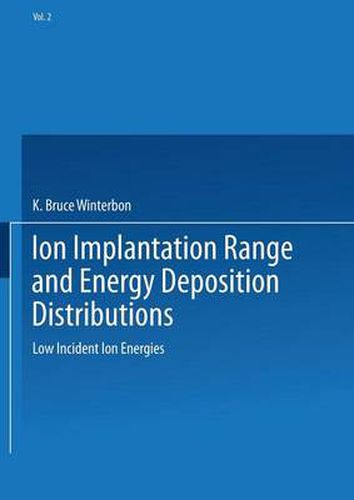Readings Newsletter
Become a Readings Member to make your shopping experience even easier.
Sign in or sign up for free!
You’re not far away from qualifying for FREE standard shipping within Australia
You’ve qualified for FREE standard shipping within Australia
The cart is loading…






This title is printed to order. This book may have been self-published. If so, we cannot guarantee the quality of the content. In the main most books will have gone through the editing process however some may not. We therefore suggest that you be aware of this before ordering this book. If in doubt check either the author or publisher’s details as we are unable to accept any returns unless they are faulty. Please contact us if you have any questions.
The present level of understanding of ion implantation is sufficient that implantation Ls being used not only as a tool in various fields of research, but also as an industrial )rocess. In these applications one uses either the implanted ions, or their energy, to nodify some properties of the target substance, and is therefore concerned with the spatial listribution of the ions or of their energy. Following the pioneering work of Bohr [1), ~indhard and his collaborators have evolved a general description of the behaviour of swift Lons slowing down in amorphous targets [2,3,4), a description which has been the basis of nuch other work in the field. Various approximate calculations have been based on this :heory, but it has not always been clear whether any disagreement between experiment and :heory is real or can be attributed to deficiencies in calculation. It is the purpose of :his volume to present the results of the Lindhard theory, calculated in an exact manner, :o serve as a guide to the users of implantation, as a tabulation of theoretical results for experimentalists to compare with, and as a statement of the theoretical results either ~s a standard for comparison for approximate calculations or as a starting point for a more ietailed theory. Results are presented in tables and in graphs, the graphs being intended to display the qualitative features so as to illustrate the competition of the various phy sical processes determining the spatial distribution of the collision cascade.
$9.00 standard shipping within Australia
FREE standard shipping within Australia for orders over $100.00
Express & International shipping calculated at checkout
This title is printed to order. This book may have been self-published. If so, we cannot guarantee the quality of the content. In the main most books will have gone through the editing process however some may not. We therefore suggest that you be aware of this before ordering this book. If in doubt check either the author or publisher’s details as we are unable to accept any returns unless they are faulty. Please contact us if you have any questions.
The present level of understanding of ion implantation is sufficient that implantation Ls being used not only as a tool in various fields of research, but also as an industrial )rocess. In these applications one uses either the implanted ions, or their energy, to nodify some properties of the target substance, and is therefore concerned with the spatial listribution of the ions or of their energy. Following the pioneering work of Bohr [1), ~indhard and his collaborators have evolved a general description of the behaviour of swift Lons slowing down in amorphous targets [2,3,4), a description which has been the basis of nuch other work in the field. Various approximate calculations have been based on this :heory, but it has not always been clear whether any disagreement between experiment and :heory is real or can be attributed to deficiencies in calculation. It is the purpose of :his volume to present the results of the Lindhard theory, calculated in an exact manner, :o serve as a guide to the users of implantation, as a tabulation of theoretical results for experimentalists to compare with, and as a statement of the theoretical results either ~s a standard for comparison for approximate calculations or as a starting point for a more ietailed theory. Results are presented in tables and in graphs, the graphs being intended to display the qualitative features so as to illustrate the competition of the various phy sical processes determining the spatial distribution of the collision cascade.